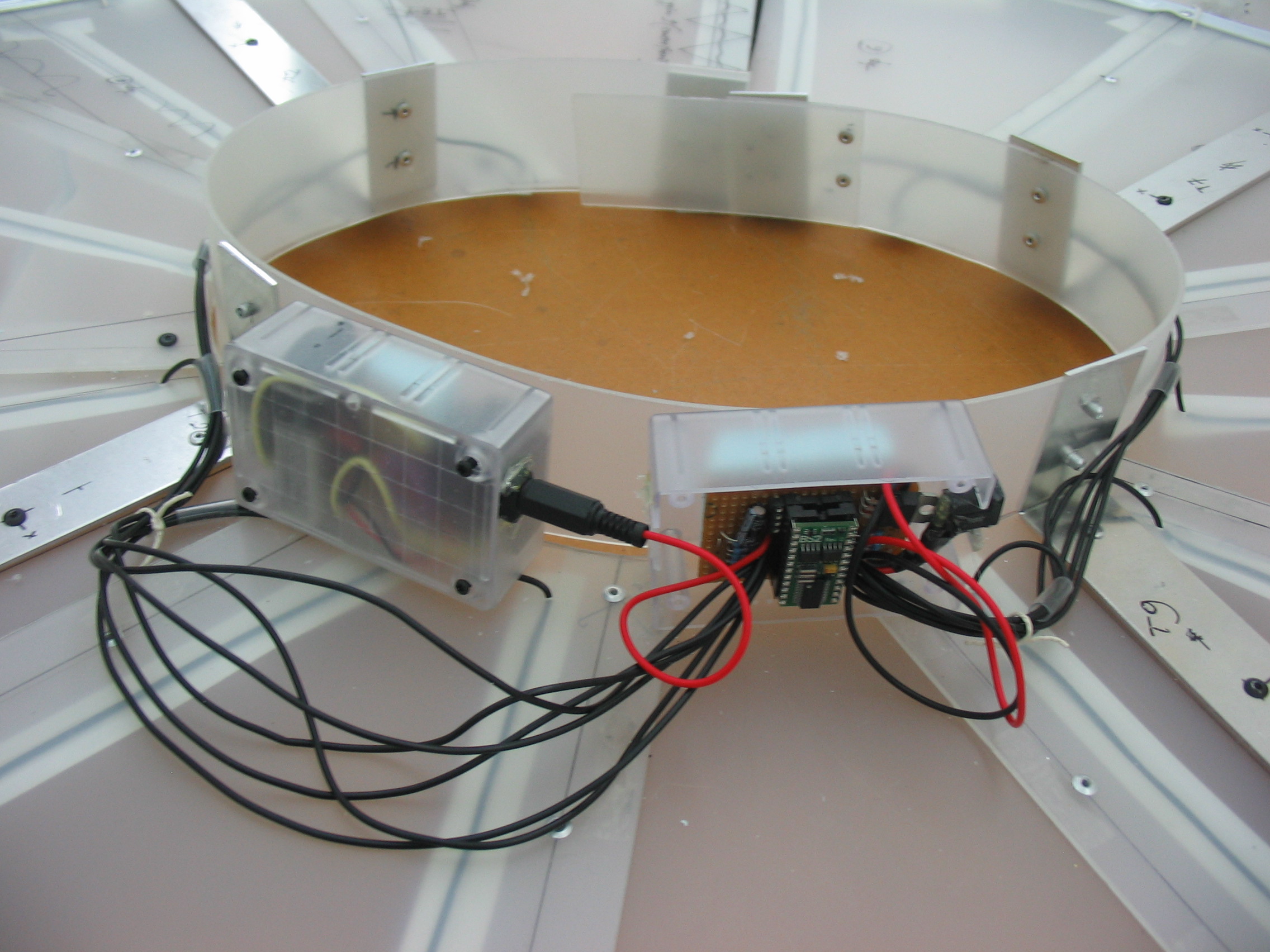4 January – 4 February 2007, Canberra Australia

hipDisk prototype as developed at reSkin
The lab took place over a three-week period in January and February 2007 at ANU – in the Textiles and the Gold and Silversmith departments of the School of Art, and at CNMA, the Centre for New Media Studies.
Prior to reSkin my practice had been in a kind of hiatus for several years, during which time I had done very little making. I had also not long returned to Australia after almost 12 years overseas. The opportunity to work intensively on some new work as well as to meet other, particularly Australian, practitioners was definitely something I was looking forward to.
Intensive residential labs provide a particular framework for the creation of new work. reSkin was no exception. The first two weeks of the lab were focussed almost entirely on skill acquisition. There was a limited amount of ideation or development of ideas, and it was only during the third and final week of the lab that the focus was on the development and construction of new works. Though it was clear that such a short albeit intense period of work, which included skill acquisition could only result in the creation of prototypes, these prototypes had to function in highly publicised and public contexts. On the final day of the lab a gala event was held for public presentation of work and on the following day, the WearNow Symposium – an international symposium focused on wearable technologies – was held at the National Museum of Australia.
The symposium included a session devoted to reSkin outcomes, including live demonstration of the created works. This requirement for public display combined with the limited time-frame for development of work can easily be considered to be an extreme limitation, but in my case in particular it turned out to be highly positive. With such limited time for ongoing reflection and research I was forced to work instinctively and to rely on and trust my previous experience, knowledge, training. The resulting work: hipDisk has proven to be a rich resource for questioning and understanding my ongoing work in wearable interface design and art as well as the directions in which my practice might be heading.
I have since presented the hipDisk a number of times in a number of different contexts including at a Dorkbot meeting in Melbourne – to peers and other tech-savvy artists, designers and engineers; to representatives of a national government funding agency; to the chief scientist of Australia; the CEO of Nanovic; to senior researchers and engineers at the CSIRO, etc. etc, as well as at the Australasian Computer Music Conference, which took place in June of this year.
I have also used the hipDisk as a vehicle through which to discuss my research aims and objectives with other artists, designers, researchers and research institutes, both in Australia and overseas. This has led to numerous conversations and meetings, which I consider to be of infinite value to my ongoing practice. In addition I now find myself at STEIM, in Amsterdam, undertaking a residency with Somaya Langley – a fellow reSkin participant, and Ross Bencina – one of the friends of facilitators and participants who came along in the last few days of reSkin to offer invaluable support. Somaya and Ross had already planned to undertake the residency at STEIM, but after reSkin they invited me to join them – to bring my complementary expertise to their proposed collaborative project. This residency is definitely an unexpected and rewarding outcome from the three-week lab, and is clearly of benefit to my practice.
There were approximately 20 participants in the reSkin lab and five or so facilitators. I can only approximate, as roles were not always clearly defined. For example, both the project manager and one of the facilitators also participated by making work; two members of the textiles department staff acted as facilitators even though their official role was to provide technical support; and, as in the case of Ross Bencina, a number of interested visitors provided invaluable reflection, feedback and technical support during the lab even helping to solve problems at 4am on the morning of the day the work was scheduled for presentation. I think this flexibility of status clearly indicates the spirit of the people involved.
reSkin clearly has been of benefit to my practice. Thanks again to ANAT for the funding to participate, without which I simply wouldn’t have been able to do so.




